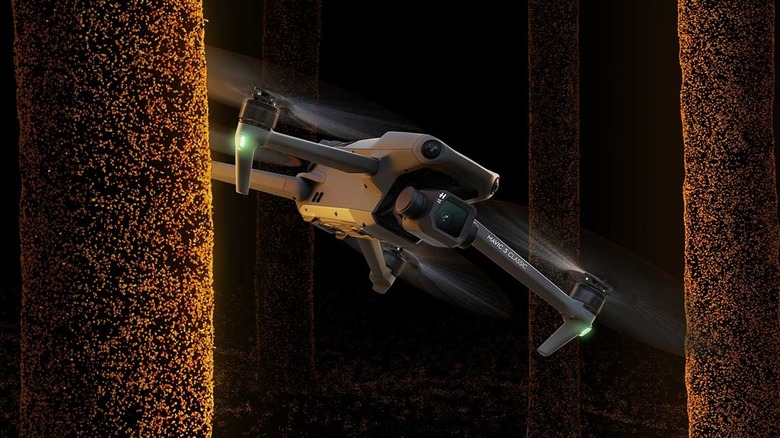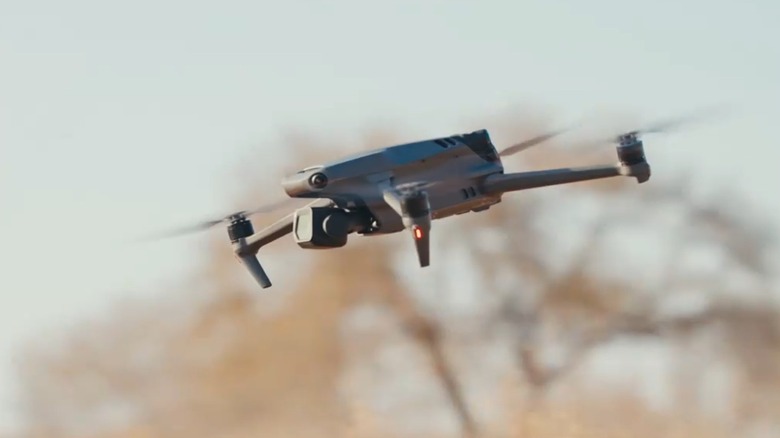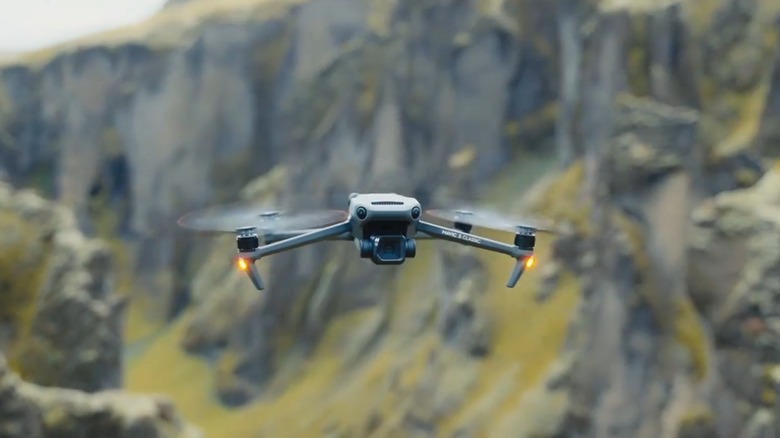Do You Need A License To Fly A DJI Mavic 3 Classic? Here's What You Need To Know
You might be surprised to learn that the FAA has over 1 million drones registered in the U.S., and an average of around 8,500 are buzzing through the sky each day, per the U.S. Department of Defense. Which is why you probably shouldn't get worked up about NJ's mysterious drone sightings. Drones are ideal for anything from recreational fun, to professional services such as roof assessment, realtor media, and more specialized surveying or mapping projects, among other uses.
Combining several upper-tier features of more expensive models like some of the coolest drones that money can buy, the DJI Mavic 3 Classic offers wide appeal for those looking to balance quality and budget. The consumer level DJI Mavic 3 Classic brings an easy-to-fly pro drone in under $1,500, that can capture polished high-end video and still imagery.
Piloting the DJI Mavic 3 Classic for commercial purposes does require a license called a remote pilot certificate. While recreational flying doesn't necessitate a license, you will still need to register the drone, pass a safety exam, and ensure you've properly linked a remote ID to your unit.
Why is drone weight a determining factor in terms of registration requirements?
There are two reasons the FAA uses drone weight; for easier classification and for safety considerations. There are three distinct weight classes of drones, those under .55-pounds (no registration required), those below 55-pounds (can register online), and the most scrutinized over 55-pound models, which require a more traditional registration application process through the mail.
In terms of safety, models which are heavier, typically feature more robust batteries and performance capabilities. The DJI Mavic 3 Classic, which weighs 895 grams or 1.97-pounds, can travel horizontally up to 21 meters per second (46.9 mph) and fly up to 30 kilometers or over 18.5 miles. Now contrast those figures with another model, like the DJI Mini 4K, which barely tips the scales at 246 grams (.54-pounds) can fly forward at up to 16 meters per second (35.7 mph) and doesn't list any official flight distance figures. It's clear that while both drones could be hazardous in untrained hands, the heftier Mavic 3 Classic, has the potential to cause more harm or property damage.
So, what are the steps required to pilot your DJI Mavic 3 Classic legally?
Those using the drone for commercial purposes must obtain a Remote Pilot Certificate (license). In order to qualify, you must meet some general requirements such as being over the age of 16, capable enough physically and mentally to operate a drone in a safe manner, and pass an exam, as outlined in the first-time pilots section.
However, whether you plan to use the drone for business or recreation, you must register your DJI Mavic 3 Classic with the FAA. Fortunately, the Mavic 3 Classic qualifies for online registration. You'll also have to take a free exam required by law for all drone operators called TRUST or the Recreational UAS Safety Test, and pass, of course.
In addition, every registered drone must include a remote ID, which helps identify each device, its location and whose name it's registered under. The DJI Mavic 3 Classic features a built-in remote ID function, which is listed on the UAS Declaration of Compliance. With integrated remote ID, the Mavic 3 Classic broadcasts its ID data during operation, which can be intercepted by law enforcement and government agencies. As part of the registration process, you'll need to log in to your account and ensure you have indicated that your drone does send out the FAA remote ID data, and include the serial number (which is usually your drone's serial number) in your records.


